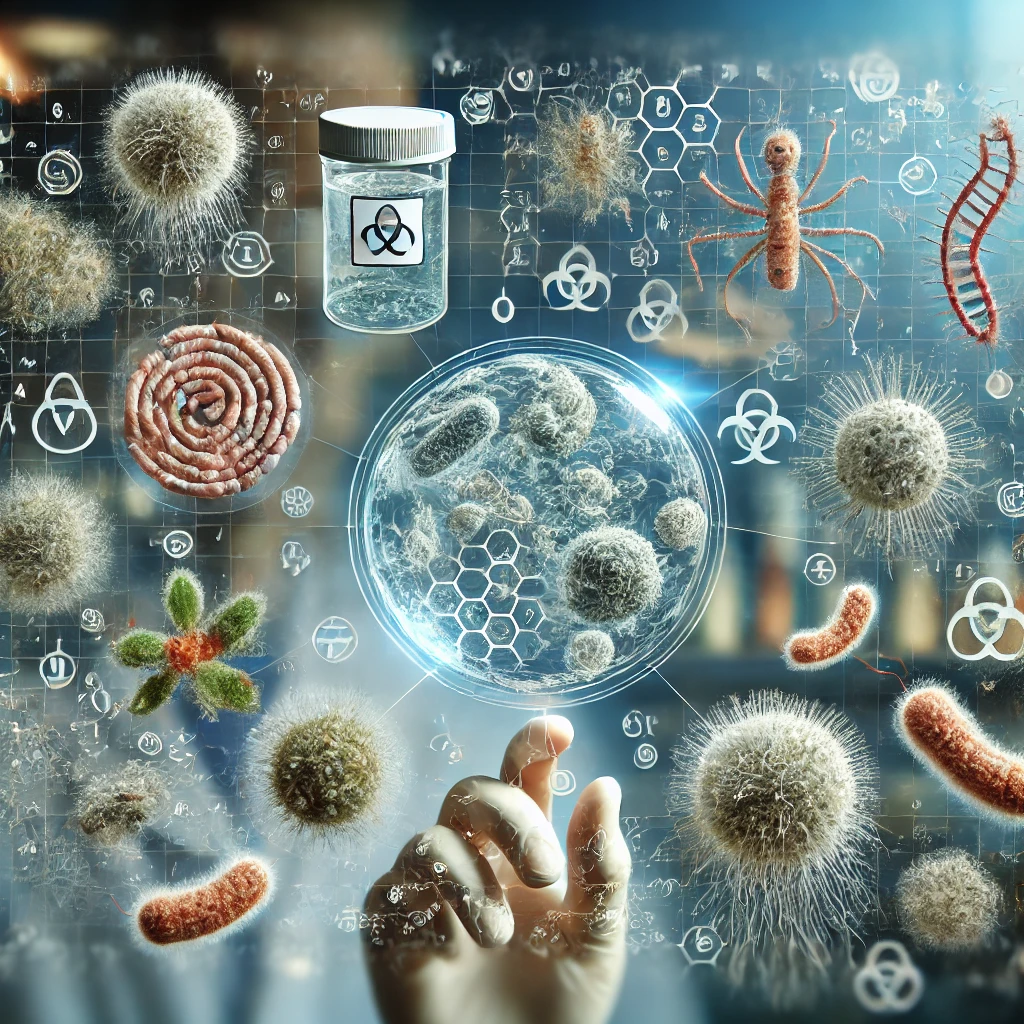Antimicrobial chemicals are an essential tool in pathogen control, acting to destroy or inhibit the infectivity of a wide range of pathogens. To be effective, they must be selected to match the structure and composition of the pathogen and applied at the right dose and frequency. It also requires ongoing research and monitoring to prevent pathogen resistance and minimize environmental contamination.
Disease-causing pathogens include bacteria, fungi, and viruses. The cell membrane, the basic structure of living organisms, is a double layer of lipids. Bacteria and fungi usually have a cell wall on the outer part of the cell membrane, while viruses have a surface made up of proteins called capsids instead of a cell membrane. Depending on the type of virus, the outside of the capsid may be covered with a lipid-based coat. Fungi and some bacteria, on the other hand, produce spores that are more resistant to drying, heat, and chemicals than other pathogens.
The chemicals used to control the number of pathogens in living environments and to prevent infectious diseases are called “antimicrobial chemicals”. Antimicrobial chemicals have a broad spectrum of sterilizing effects because they act on structural components that many pathogens have in common. However, the structure and components of pathogens are not completely the same for each type of pathogen, so the same antimicrobial chemical may have different sterilizing effects.
Among antimicrobial chemicals, sterilizing agents destroy all pathogens, including spores. Anti-infectives are compounds that kill pathogens except for spores and are used to disinfect hospitals, public facilities, and homes. Antimicrobial chemicals that are less toxic and can be used to disinfect human skin or wounds are called disinfectants. Since human cell membranes are also composed of lipids, even disinfectants can kill human cells, so care must be taken to avoid contact with mucous membranes such as the eyes and respiratory tract. Therefore, antimicrobial chemicals must be used according to the type to ensure maximum protection against pathogens and maximum safety for humans and the environment.

The mechanisms of action of antimicrobial chemicals can be divided into two main categories: those that damage the surface of the pathogen and those that interfere with metabolic functions inside the pathogen, but in many cases, both mechanisms work together. Alcohol compounds, such as high concentrations of ethanol, dissolve lipids, the basic building blocks of cell membranes, denature proteins, and in pathogenic bacteria, weaken cell walls. Alcohol compounds are also more effective against pathogenic viruses with lipid coatings than viruses without lipid coatings. Because lipid coatings play an important role in the process by which pathogenic viruses infect humans, antimicrobial chemicals with the ability to damage lipids are effective against pathogenic viruses.
Oxidizing agents such as sodium hypochlorite are widely used to prevent infection of various viruses with or without lipid films. The oxidizing agents used to control pathogenic viruses have the ability to damage the capsid, which is the common surface structure of viruses, thus destroying the virus or causing the virus to lose its infectivity. Even if the slight damage to the surface of the pathogen is not enough to kill it, the sterilization effect increases as the antimicrobial chemical penetrates inside. Alkylating and oxidizing agents stop essential metabolism once they get inside the pathogen. When alkylating agents such as glutaraldehyde bind alkyl functional groups to proteins, they denature them and render them inactive, and when they bind to the bases of nucleic acids, they alter the nucleic acids into abnormal structures, disrupting gene replication and expression.
Sodium hypochlorite, an oxidizing agent, oxidizes unspecified proteins within the pathogen, inactivating the enzymes that make up the proteins and killing the pathogen. Another caveat to the use of these chemicals is that overuse of antimicrobial chemicals can lead to the risk of pathogen resistance. Therefore, the use of antimicrobial chemicals should be done at the proper dose and frequency, and ongoing research and monitoring is necessary to prevent pathogen resistance. It is also important to develop eco-friendly and sustainable control methods to minimize environmental pollution.
As you can see, antimicrobial chemicals are an essential tool in the fight against pathogens, but their effectiveness can only be maximized with proper use and ongoing management. A multifaceted approach is needed to find control measures that consider environmental and human safety, and to prevent pathogen resistance.
